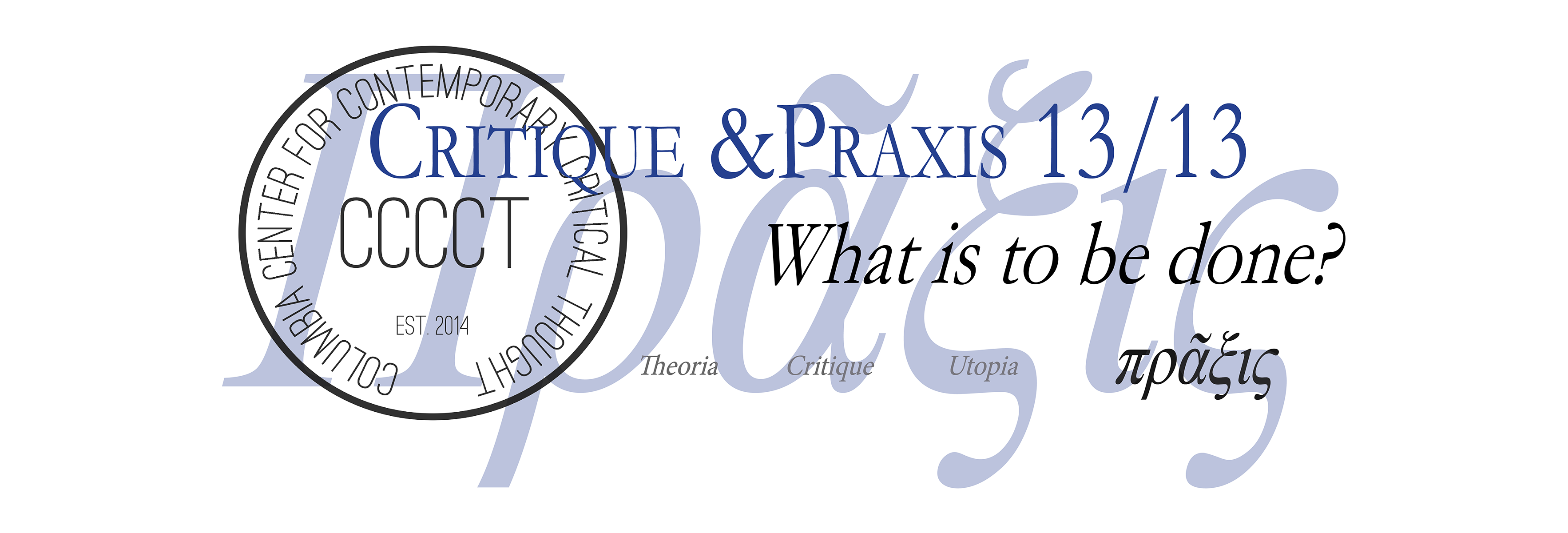By Bernard E. Harcourt
“when bodies assemble on the street, in the square, or in other forms of public space (including virtual ones) they are exercising a plural and performative right to appear, one that […] delivers a bodily demand for a more livable set of economic, social, and political conditions no longer afflicted by induced forms of precarity.”
— Judith Butler, Notes Toward a Performative Theory of Assembly (2015)
Tahrir Square, January 2011. Zuccoti Park, November 2011. Taksim Gezi Park, May 2013. Place de la République, March 2016. Today, the Champs Élysées at the Étoile. The Smile Revolution in Algeria. The images have now become iconic. The mode of uprising as well. Assembly. Leaderlessness. Political disobedience.
In her Notes Toward a Performative Theory of Assembly, Judith Butler explores the power of assembly. Butler draws on theories of performativity—which she helped develop in the context of gender—to suggest that these assemblies enacted a particular form of “we the people,” one in which the multitude gather to contest their condition of precarity and proclaim loudly to those in power that “we are part of the people and we are still here.” Assembly is the condition of possibility for forming a people that does not act merely as a group of individuals, but as a collective. “The thesis of this book,” Butler writes, “is that none of us acts without the conditions to act, even though sometimes we must act to install and preserve those very conditions.” (16) Assembly is, in this sense, an act of defiance in the face of domination.
For Butler, the performative nature of assembly is a necessary element, a very precondition for the freedom of expression. The materiality of assembly precedes and fashions the narrowly discursive. Rather than subsume the assembled bodies within discourse, Butler tries to peel off the assembly of bodies from what is said, in order to give independent meaning to the bodies. The assembly, Butler argues, is a precondition for speech. It prefigures what is said: “the assembly is already speaking before it utters any words,” Butler writes. (156) Butler recognizes the formal nature of the distinction and acknowledges its artificiality—writing that “We might be tempted on the basis of older habits to say, ‘but if it signifies, it is surely discursive,’ and maybe that is true. But that rejoinder, even if it holds, does not let us examine the important chiasmic relation between forms of linguistic performativity and forms of bodily performativity. They overlap; they are not altogether distinct; they are not, however, identical with one another.” (8-9, emphasis added) Butler though finds it useful, politically, to distinguish in order to analyze. Her central point is this: “by coming together [the assembly] is already an enactment of a popular will. […] The ‘we’ voiced in language is already enacted by the gathering of bodies, their gestures and movements, their vocalizations, and their ways of acting in concert.” (156-157)
This enactment of a “we” by means of physical assembly—both being present or being absent for those who are in prison or have been disappeared—is, for Butler, an essential precondition to expression and speech. It forms—or it performs—the medium within which claims for inclusion are expressed. In Butler’s words:
When those who face accelerating prospects of precarity take to the streets and begin their claim with “we the people,” then they are asserting that they, those who appear and speak there, are identified as “we the people.” They are working to ward off the prospect of oblivion. The phrase does not imply that those who profit are not “the people,” and it does not necessarily imply a simple sense of inclusion: “we are the people, too.” It can mean, “we are still the people”—therefore, still persisting and not yet destroyed. Or it can assert a form of equality in the face of increasing inequality. (181)
The central point here is that the materiality of assembly, the corporeal presence and absence of people assembled in the square, has a force of its own, independent of what is said, and serves to play the precondition for what gets said. Assembly, in and of itself, matters. It says and does a lot. Or, as Butler writes: “the basic requirements of the body are at the center of political mobilizations—those requirements are, in fact, publicly enacted prior to any set of political demands.” (182)
In her work, Butler advocates for an ethical form of assembly that is non-violent—non-violent as an ethical and tactical matter. Not as an absolute or imperative or in a transhistorical way. But rather as a tactical matter in these times. Silently, Butler objects to the Foucault of the early 1970s, who mapped social relations on civil war. As if directly addressing The Punitive Society, Butler writes that to distinguish herself from “those who can only read the tactic as hatred and the continuation of war by other means.” (192)
Butler’s writings offer a theoretical entry to a range of issues that, today, surround the assembly as a form of praxis. How does the assembly function, exactly? How should we think about the new element of leaderlessness so common at these social movements? What is the role of non-violence, and is assembly necessarily non-violent? How does assembly, as praxis, relate to the riot, the strike, and the other forms of uprising? These questions could not be more pressing today, with hundreds of thousands of Algerians assembling in Algiers as I write to oust President Abdelaziz Bouteflika and increasingly tense assemblies at the Champs-Élysées in Paris by the Yellow Vests. Just this week, President Macron called in the military anti-terrorism units to police the next Act 19 of the Yellow Vests tomorrow. How should we understand and practice assembly?
To address these questions, we welcome four brilliant critical thinkers to our seminar: Robin Celikates from the Institute for Advanced Study, Joshua Clover from the University of California Davis, Marianne Hirsch from Columbia University, and Nandini Sundar from the University of Delhi.
Welcome to Praxis 11/13!
